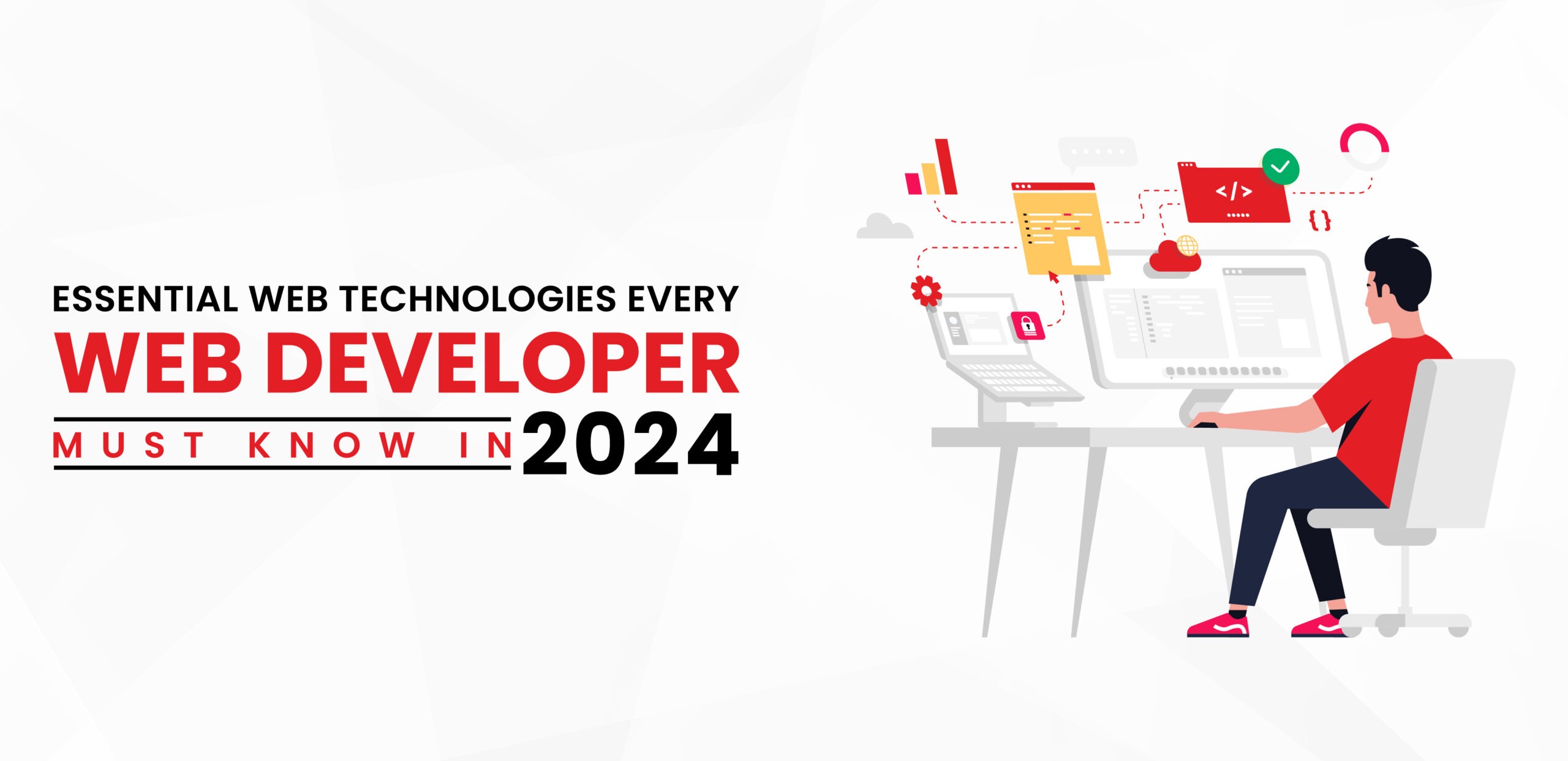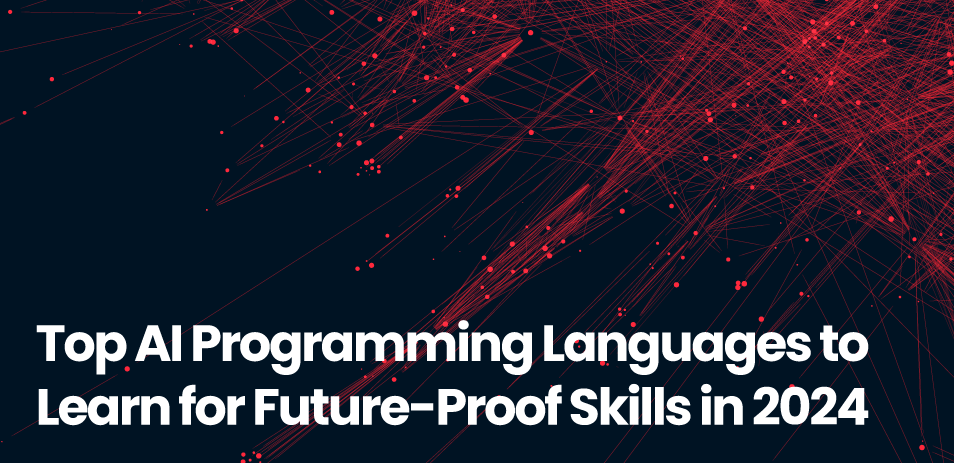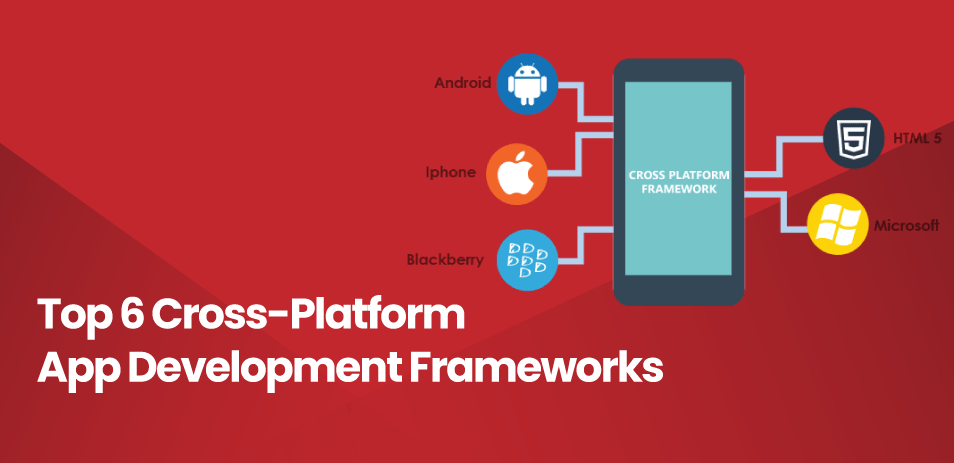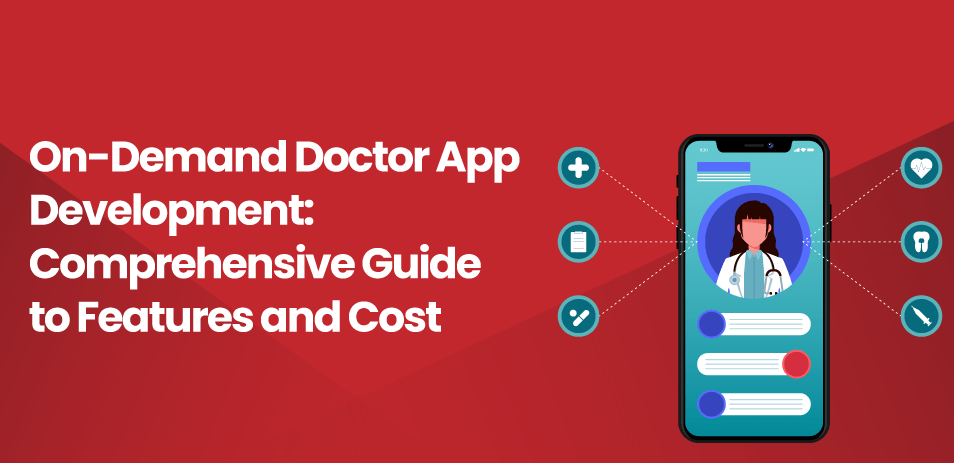Best Web Application Development Technologies to Use in 2024
In the rapidly evolving landscape of web development, staying ahead of the technological curve is imperative for businesses aiming to craft innovative, user-centric digital experiences. As we stand at the threshold of 2024, the anticipation is high for the emergence of groundbreaking web Application development technologies that will redefine industry standards.
Our journey navigates through the dynamic array of web technologies set to dominate the web development sphere. From the seamless interactivity of JavaScript frameworks like React.js to the robust backend capabilities of Python’s Django and PHP’s Laravel, we meticulously explore each technology’s potential. As a prominent web application development company, AppVerticals recognizes the critical importance of aligning with cutting-edge tools. This exploration sheds light on the anticipated trends, offering businesses, developers, and tech enthusiasts valuable insights into the tech arsenal that will empower them to elevate their web development endeavors in 2024. Join us on this informative expedition as we delve into the technological forefront poised to shape the future of web development.
Front-End Web Technologies
Frameworks
1. Angular:
Angular, developed and maintained by Google, is a comprehensive JavaScript framework for building dynamic, single-page web applications. It follows the Model-View-Controller (MVC) architectural pattern, offering a robust structure for large-scale projects. Angular provides two-way data binding, dependency injection, modular development, and a powerful CLI for efficient development. With a strong focus on testability and maintainability, Angular is suitable for enterprise-level applications, offering a complete solution for both frontend and backend development.
2. React.js:
React.js, created by Facebook, is a declarative and efficient JavaScript library for building user interfaces. It follows a component-based architecture, allowing developers to build reusable UI components. React’s virtual DOM optimizes rendering, enhancing application performance. With a unidirectional data flow and a rich ecosystem of libraries (Redux for state management, React Router for navigation), React simplifies the development of interactive and scalable web applications. Its popularity stems from its simplicity, flexibility, and the ability to integrate seamlessly with other libraries or existing projects.
3. Vue.js:
Vue.js is a progressive JavaScript framework for building user interfaces. Known for its simplicity and flexibility, Vue.js is easy to integrate into existing projects. It employs a component-based architecture, allowing developers to create reusable and modular UI elements. Vue.js provides reactive data binding, a virtual DOM for efficient updates, and a straightforward syntax. It’s suitable for both small-scale projects and larger applications. Vue’s gradual adoption approach allows developers to use as much or as little of the framework as needed, making it a versatile choice for front-end development.
4. Django:
Django is a high-level Python web framework that promotes rapid development and clean, pragmatic design. It follows the Model-View-Controller (MVC) architectural pattern, emphasizing the “Don’t Repeat Yourself” (DRY) principle. Django includes an Object-Relational Mapping (ORM) system for database interactions, an admin interface, and built-in security features. It encourages the use of reusable components and follows the convention over configuration philosophy, simplifying development tasks. Django’s “batteries-included” philosophy means it comes with many built-in features, reducing the need for third-party libraries. It is well-suited for developing robust and scalable web applications in Python.
5. Ruby on Rails:
Ruby on Rails, often referred to as Rails, is a full-stack web application framework written in Ruby. Created with the principle of “convention over configuration,” Rails emphasizes simplicity and productivity. It follows the Model-View-Controller (MVC) architectural pattern and includes an Object-Relational Mapping (ORM) system called ActiveRecord. Rails offers a set of conventions for naming and organizing code, making it easy for developers to create robust, maintainable applications. It comes with built-in tools for tasks like database migrations, testing, and scaffolding, allowing developers to focus on building features rather than dealing with configurations.
6. Laravel:
Laravel is a modern, elegant PHP web framework designed for building web applications following the Model-View-Controller (MVC) architectural pattern. Known for its expressive syntax and developer-friendly features, Laravel simplifies common tasks such as routing, authentication, and caching. Laravel’s Eloquent ORM provides an elegant, active record implementation for database interactions. The framework includes features like Artisan, a command-line tool for common tasks, and Blade, a lightweight templating engine. Laravel’s focus on readability and ease of use, along with its vibrant ecosystem, has made it a popular choice for PHP developers aiming to create scalable and maintainable applications.
7. ASP.NET MVC:
ASP.NET MVC is a web application framework developed by Microsoft as part of the ASP.NET platform. Following the Model-View-Controller (MVC) architectural pattern it allows developers to build scalable and maintainable web applications. ASP.NET MVC provides features such as routing, model binding, and a powerful templating system. It integrates seamlessly with other ASP.NET technologies, including Web API, for building RESTful services. With a focus on separation of concerns, testability, and extensibility, ASP.NET MVC is suitable for building enterprise-level applications on the Microsoft .NET platform.
8. Express.js:
Express.js is a minimalist and flexible web application framework for Node.js. It provides a robust set of features for building web and mobile applications, making it one of the most popular Node.js frameworks. Express.js simplifies the creation of server-side logic and routing, allowing developers to build scalable and modular applications. It is known for its lightweight nature and unopinionated design, enabling developers to choose and integrate the libraries and tools that best fit their project requirements. Express.js is commonly used for creating RESTful APIs and building the backend of modern web applications using JavaScript on the server side.
Turbocharging the Web Experience: Performance Optimization in 2024
In a world where attention spans rival those of goldfish, every millisecond counts. Performance optimization is no longer a luxury but a necessity for any website that aims to captivate users and conquer search rankings. Here are the top web development technologies and techniques shaping web performance in 2024:
WebAssembly: Unlocking Supersonic Speeds
Imagine a world where web apps execute code at near-native speeds. That’s the promise of WebAssembly, a low-level bytecode that brings the power of languages like C++ and Rust to the browser.
How it works: WebAssembly code is compiled into compact binary files that browsers can load and execute significantly faster than traditional JavaScript.
Use cases: Ideal for computationally intensive tasks like 3D graphics, video processing, and game development, resulting in smoother, more responsive experiences.
JAMstack: Serving Speed on a Silver Platter
JAMstack (JavaScript, APIs, and Markup) is a modern architecture that prioritizes pre-rendering and static site generation for lightning-fast loading times.
Key principles:
- Content is pre-rendered during build time, eliminating server-side rendering delays.
- Websites are hosted on content delivery networks (CDNs) for global reach and edge caching.
- APIs are used for dynamic content and interactions.
Benefits:
- Optimized performance, scalability, and security.
- Improved SEO due to faster loading speeds and static content.
- Developer-friendly workflow with clear separation of concerns.
Image Optimization: Picture-Perfect Performance
Images often account for a significant chunk of a website’s weight. Optimizing them is crucial for fast loading speeds.
Techniques:
- Compression formats like WebP and AVIF offer superior quality at smaller file sizes.
- Responsive image loading ensures images adapt to different screen sizes.
- Lazy loading defers loading images until they’re needed in the viewport.
Caching: The Art of Reusing Resources
Caching stores frequently accessed resources, reducing server load and enhancing speed.
Types of caching:
- Browser caching stores static assets locally for repeat visits.
- Server-side caching stores generated content to avoid redundant processing.
- CDN caching distributes content globally for faster delivery.
Responsive Design: Fluid Experiences Across Screens
Ensuring seamless experiences on all devices is paramount for user satisfaction.
Key principles:
- Adaptable layouts that adjust to different screen sizes.
- Flexible images and media that scale appropriately.
- Optimized touch interactions for mobile devices.
Critical Rendering Path: First Impressions Matter
The critical rendering path (CRP) is the sequence of steps a browser takes to render a page. Optimizing it ensures faster-perceived load times.
Techniques:
- Minimize render-blocking resources like large JavaScript files and CSS.
- Inline critical CSS for immediate rendering.
- Defer non-critical scripts and styles.
Crafting Your Ideal Mobile App/Experience Starts Here!
Ready to elevate your business? Your custom app is just a click away.
Yes Let’s goBeyond Speed: Emerging Trends Reshaping the Web in 2024
We’ve covered the essential tools for building a blazing-fast website. But in the ever-evolving landscape of web development, speed is just the baseline. To truly captivate users and stand out from the crowd, we need to embrace the frontiers of technology and weave cutting-edge trends into the fabric of our web experiences. Here are two exciting innovations shaping the future of the Web in 2024:
1. Motion UI & Animations: Bringing Websites to Life
Static pages are a thing of the past. Motion UI and animations inject life and personality into your website, enhancing user engagement and creating a memorable brand experience.
Microinteractions: Imagine gently fading buttons on hover or subtle background shifts as users scroll. These tiny animations delight users and add a layer of polish to your interface.
Dynamic transitions: Smooth page transitions keep users hooked and create a sense of cohesion between different sections of your website.
Benefits:
- Increased user engagement and interaction
- Improved brand recall and differentiation
- Enhanced storytelling and information visualization
2. AI & Machine Learning: Weaving Intelligence into the Web
Artificial Intelligence and machine learning are no longer sci-fi concepts. They’re permeating the Web, offering functionalities that were once unimaginable.
Personalized Experiences:
Imagine a website that tailors its content, recommendations, and even layout to each user’s preferences. AI makes this possible, leading to higher conversion rates and deeper user engagement.
Smart Chatbots:
Forget robotic, repetitive interactions. AI-powered chatbots can hold natural conversations, answer complex questions, and even guide users through complex tasks.
Voice Search Optimization
Optimize your content for voice search, the rising star of user interaction. AI can help you understand conversational queries and ensure your website ranks high in voice search results.
Benefits:
- Personalized experiences that resonate with users
- Improved customer service and engagement
- Increased visibility and accessibility
These are just a glimpse into the vast potential of AI and machine learning in web development. By embracing these trends, you can create websites that are not just fast and functional but also intelligent, dynamic, and deeply engaging for your users.
Backend Web Technologies
Languages:
Here are five programming languages commonly used for web app development:
JavaScript:
JavaScript is a versatile scripting language primarily employed for front-end web development. Supported by all major browsers, it enhances user interfaces with dynamic and interactive elements. Its server-side use through Node.js enables full-stack development. JavaScript frameworks like React, Angular, and Vue.js empower developers to create efficient, modern web applications, while libraries such as jQuery facilitate DOM manipulation and AJAX requests.
Python:
Renowned for readability and simplicity, Python is a multipurpose language that is extensively used in web development. Its clean syntax facilitates rapid development, making it ideal for backend processes. Python frameworks like Django and Flask streamline web app creation. Additionally, Python’s versatility extends to data science, artificial Intelligence, and automation, contributing to its widespread adoption in various domains.
Java:
Java, a versatile and object-oriented language, excels in building scalable and robust web applications. Employed heavily in enterprise environments, it follows the “write once, run anywhere” principle. Java’s extensive ecosystem and frameworks, such as Spring, provide solutions for various web development challenges. Its server-side capabilities, coupled with frameworks like JavaServer Faces (JSF) and Struts, make it a powerhouse for constructing complex and high-performance web solutions.
PHP:
PHP, a server-side scripting language, is widely used for dynamic web page development. Known for its simplicity and integration capabilities, PHP powers popular content management systems like WordPress. Laravel and Symfony are prominent PHP frameworks that enhance scalability and maintainability, fostering efficient web application development. PHP’s ubiquity and ease of use make it a preferred choice for projects ranging from small websites to large-scale web applications.
Ruby:
Ruby, a dynamic and object-oriented language, gained prominence with the Ruby on Rails framework. Renowned for its elegant syntax and convention over configuration approach, Ruby simplifies web development tasks. Ruby on Rails streamlines building robust web applications, emphasizing developer productivity. Its scaffolding features, integrated testing, and modular structure contribute to rapid development. While widely used for startups and smaller projects, Ruby’s readability and expressiveness make it suitable for a variety of web development tasks.
Building with APIs and Microservices in 2024
Imagine a towering skyscraper constructed not as a single, monolithic block but as a federation of independent skyscrapers, each with its purpose and expertise. This is the essence of microservices architecture, a revolutionary approach to building web applications that’s taking the world by storm.
At the heart of this architectural shift lies the power of APIs (Application Programming Interfaces). APIs act as intermediaries, enabling communication and data exchange between these independent microservices. Think of them as bridges connecting the bustling streets of your microservice city.
Why Microservices and APIs Matter:
- Modular Magic: Build and maintain web applications in smaller, well-defined units, making development faster, easier, and more flexible.
- Scaling Up with Ease: Need to add a new feature? Deploy a new microservice without affecting the existing ones. Imagine adding a new skyscraper to your city without disrupting the others.
- Resilience in the Face of Failure: If one microservice encounters an issue, it doesn’t bring down the entire application. Your city stays vibrant even if one building needs repairs.
- Maintainability Bliss: Fix, update, or replace individual microservices independently, keeping your codebase clean and manageable. This is like renovating individual apartments without needing to rebuild the entire skyscraper.
The API Arsenal:
Different APIs cater to different needs. Here are the leading contenders for 2024:
- RESTful APIs: The tried-and-true standard, offering predictable, lightweight interactions for data fetching and manipulation. Imagine them as well-established, organized avenues in your microservice city.
- GraphQL: Emerging as a challenger, GraphQL allows for more flexible data retrieval, empowering clients to request only the specific data they need. Think of it as a customizable subway system where you can choose your exact destination instead of following a fixed route.
- API Gateways: Act as central hubs, managing traffic and security for all your APIs, offering a single point of entry for external consumers. Imagine a grand central station connecting all the different travel modes in your microservice city.
Crafting Your Ideal Mobile App/Experience Starts Here!
Ready to elevate your business? Your custom app is just a click away.
Yes Let’s goThe Futuristic Trends of Web Development in 2024
The Web is no longer just a passive canvas for displaying information. It’s morphing into a dynamic force, pushing the boundaries of user experience and functionality. Here, we unveil four revolutionary trends poised to reshape the web landscape in 2024 and beyond:
1. Progressive Web Apps (PWAs): Blurring the Lines Between Web and App
Imagine websites that feel like native apps, work offline, and offer lightning-fast performance. Welcome to the world of PWAs, the future of mobile engagement. They leverage service workers; app manifests, and cached resources to deliver experiences rivaling native apps, with the added benefit of discoverability through search engines.
Benefits:
- Increased user engagement and conversion rates with app-like features.
- Improved SEO due to faster loading times and offline accessibility.
- Reduced development costs compared to building separate native apps.
2. Serverless Architecture: Offloading the Burden, Unleashing the Power
Gone are the days of managing complex server infrastructure. Serverless architecture redefines backend development by shifting code execution to managed cloud environments. You write and deploy code in response to specific events, leaving server provisioning and maintenance to the cloud provider.
Benefits:
- Reduced operational costs by paying only for consumed resources.
- Increased scalability to handle sudden traffic spikes effortlessly.
- Faster development cycles with simplified deployments and event-driven programming.
3. Blockchain Technology: Building Trust and Transparency on the Web
Blockchain, the technology behind cryptocurrencies, is finding its way into diverse web applications. Its core principles of decentralization, security, and transparency offer revolutionary possibilities. Imagine marketplaces where users directly interact, and trust is built into the code itself.
Benefits:
- Enhanced security and transparency in data management and financial transactions.
- Decentralized platforms that empower users and eliminate reliance on intermediaries.
- Innovative applications in supply chain management, voting systems, and creative ownership.
4. Internet of Things (IoT): Weaving the Web into the Fabric of our World
From smart homes to connected cars, the internet is no longer confined to screens. IoT connects physical devices to the Web, generating real-time data that can be analyzed and visualized through web-based dashboards. Imagine managing your home appliances, monitoring your health remotely, or analyzing environmental data seamlessly through your web browser.
Benefits:
- Enhanced automation and remote control of connected devices.
- Real-time data analysis and visualization for insights and decision-making.
- Creation of new user experiences that blur the lines between the physical and digital worlds.
Conclusion
Nowadays, having a great website is important for businesses. If you want your website to stand out and be modern, it’s essential to know about the latest web development trends. These trends can transform your old website into a new and improved one. Even if you’re building a new site, using the latest web development technologies makes it more user-friendly.
The road ahead may present challenges, but they are opportunities for innovation. Bring your vision to life by scheduling a free consultation call. Our skilled web development team is ready to discuss how we can turn your online goals into reality. Your journey to digital success begins here!








